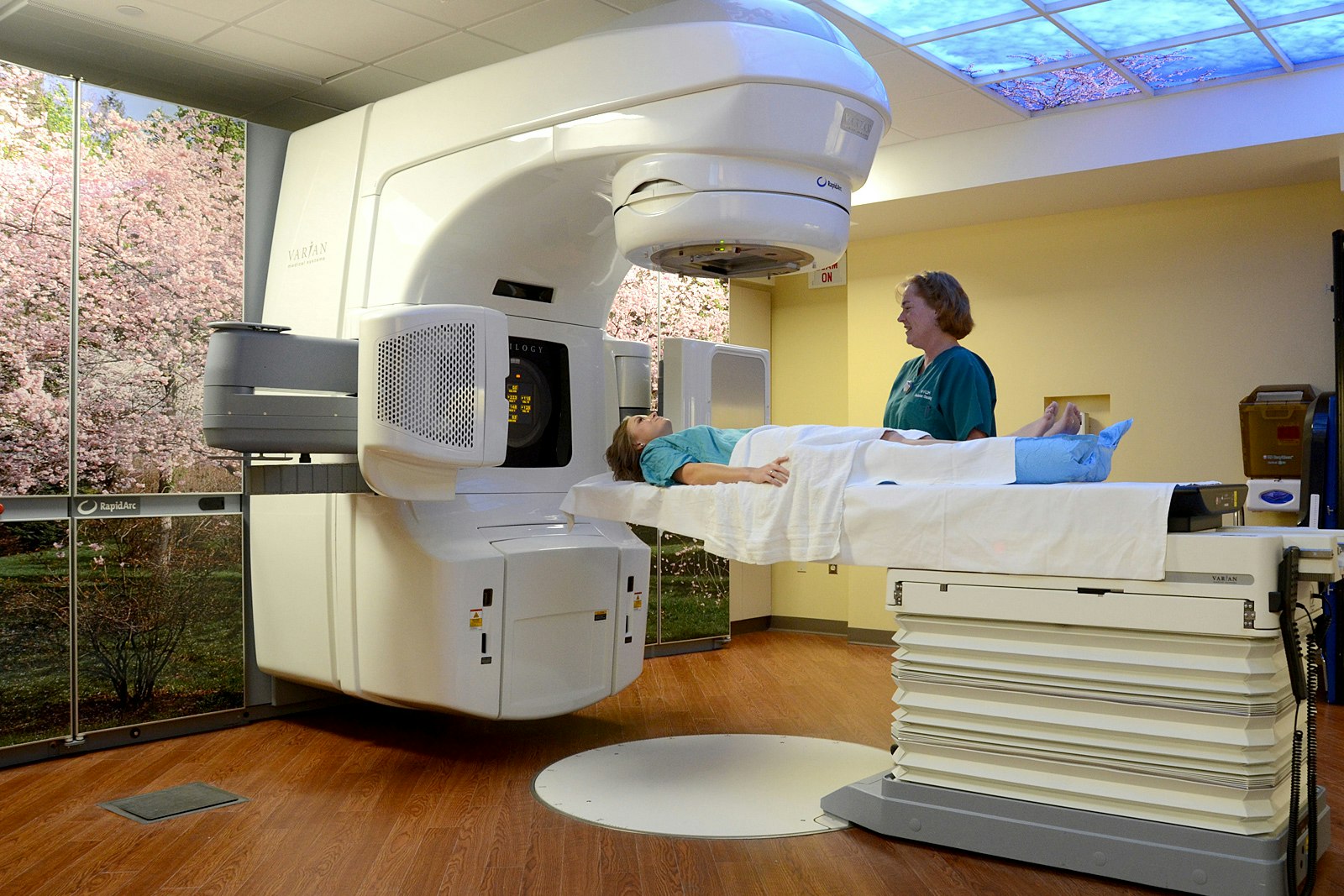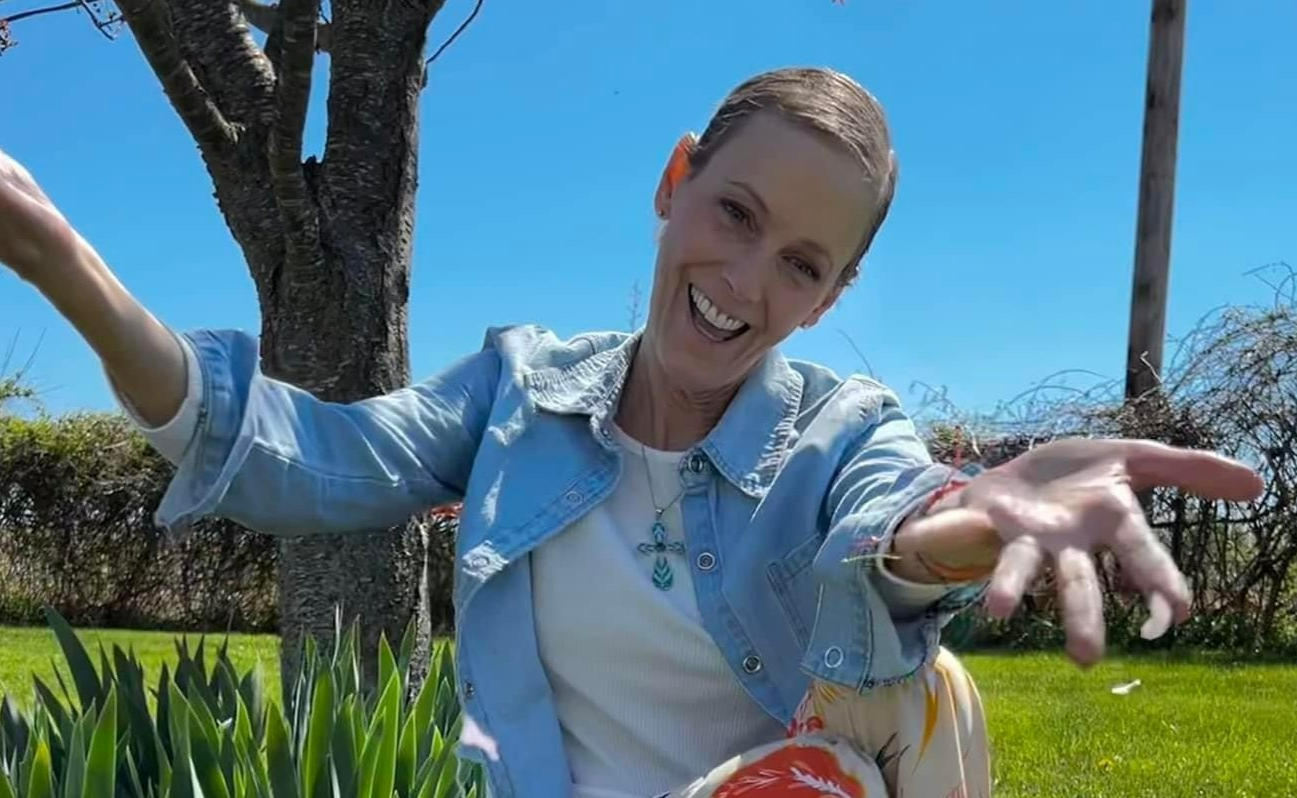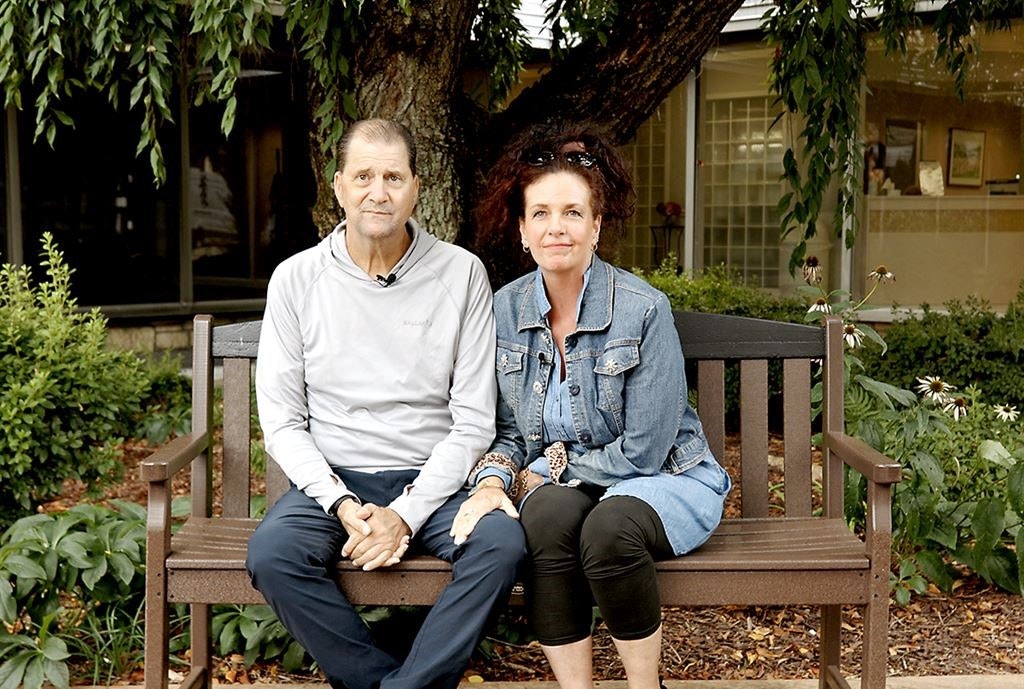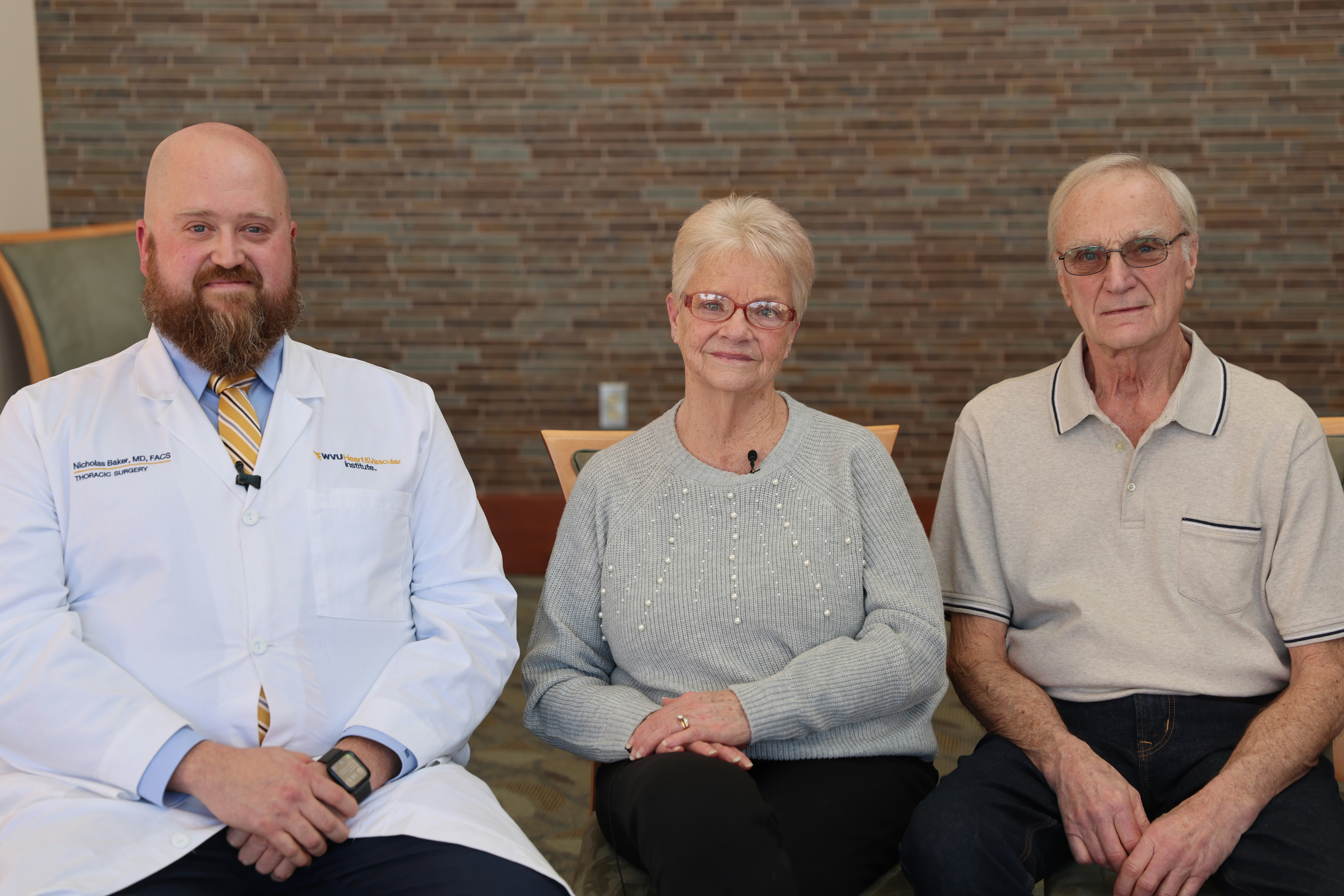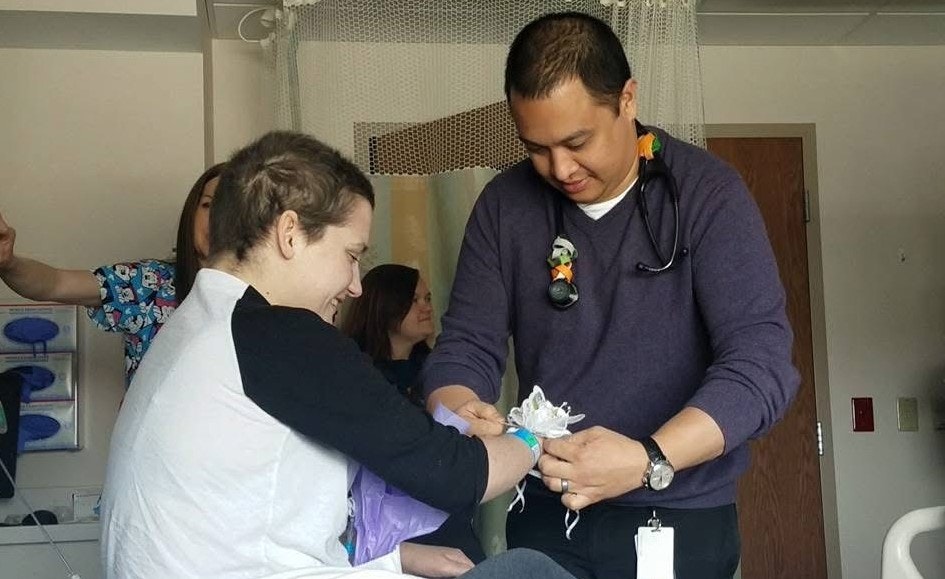Tumors that start in the brain or spinal cord are called primary brain or spinal cord tumors. Some tumors begin in other parts of the body and then spread to the brain or spinal cord. These are called metastatic or secondary brain or spinal cord tumors.
Brain and spinal cord tumors lead to major challenges and impact the neurological functions of the body depending on the location of the tumor, the size, and the stage. Neurological functions, such as loss of movement, seizures, speech, hearing, or sight, may all be affected.
At WVU Medicine, brain and spine cancer experts from the WVU Cancer Institute and WVU Rockefeller Neuroscience Institute collaborate to bring the latest advancements in cancer diagnostics and treatments. Together, we provide the most comprehensive treatment for those affected by cancer.
Our team brings together board-certified neurosurgeons, neuro-oncologists/oncologists, radiation oncologists, neuropathologists, neuroradiologists, neuropsychologists, and highly trained specialty nurses, all with expertise in brain and spinal cord tumors. We work to make sure your treatment is customized to your specific type of cancer and your needs.
Services and programs are provided in state-of-the-art facilities by a team that understands how cancer is physically and emotionally challenging. A cancer diagnosis is never easy to hear, but at the WVU Cancer Institute and the WVU Rockefeller Neuroscience Institute, you’ll have access to some of the nation’s best in cancer care. It’s where you’ll find hope, compassionate care, and the expertise you need to treat cancer.
Types of Brain and Spinal Cord Cancer We Treat
We specialize in evaluating and treating both cancerous and noncancerous brain and spinal cord tumors. We also diagnose and treat rare neurologic complications of cancer, such as paraneoplastic neurologic disorders, which affect the nervous system in those with cancer.
Some brain tumors grow slowly and may not cause symptoms until they become large. Others can grow quickly. And not all brain and spinal cord tumors are cancerous. Some are benign (noncancerous) but still cause major problems. Our team has expertise in diagnosing and treating all types of brain and spinal cord tumors, including:
Primary and secondary brain cancers
There are over 120 different types of brain and central nervous system tumors. They affect about 20,000 people of all ages and genders in the United States each year. We treat all types of primary and secondary brain tumors, including rare tumors. The majority of brain tumors are classified into the following:
-
Gliomas — This type of cancer is a common primary tumor that occurs in the brain or spinal cord. It begins in the glial cells that surround the neurons in the brain. We treat all types of gliomas, including:
- Glioblastomas — This type of cancer is one of the most common types of glioma in adults. It is a type of high-grade astrocytoma that usually starts in the cerebrum, the largest part of your brain.
- Diffuse midline gliomas — These fast-growing tumors are primary central nervous system tumors.
- Ependymomas — Forming in the ependymal cells in the middle of the spinal cord, this type of cancer can grow anywhere in the central nervous system, including the neck and the upper and lower back. These are more common spinal cord tumors.
- High-grade and low-grade astrocytomas — This type of cancer can grow slowly, or it can grow quickly and be aggressive. It forms in the central nervous system in cells called astrocytes.
- Oligodendroglioma and anaplastic oligodendroglioma — This rare, slow-growing tumor starts in the cells that produce the fatty covering that protects the nerves within the central nervous system.
- Medulloblastomas — Although it’s rare in adults, this type of cancer is one of the most common brain cancers among children. The tumor starts at the skull base and may spread to other parts of the brain and spinal cord.
- Pineal gland tumors and other rare tumors — We treat rare tumors such as germinoma, choriocarcinoma, yolk sac tumor, and teratoma. The pineal gland is in the center of the brain and is responsible for making the sleep hormone melatonin. These types of tumors may be both cancerous and noncancerous.
- Pituitary tumors — These tumors are usually benign (noncancerous) and are rarely cancerous. They form in the pituitary gland, a gland located in the skull below the brain and above the nasal passages.
- Meningiomas — Meningiomas are slow-growing tumors arising from the meninges, the membranes that surround the brain. When it affects the surrounding brain tissue, nerves or vessels may cause serious disability.
- Primary CNS lymphomas — These are a rare kind of extranodal non-Hodgkin B-cell lymphomas occurring in the brain and other central nervous system structures. Timely management of these tumors is very important.
- Metastatic brain cancers — Metastatic brain cancers are more common than primary brain cancers. The most common cancer types that cause metastatic brain and spine tumors are cancers of the lung, breast, skin (melanoma), colon, kidney, and thyroid gland.
Spinal cord cancer
Tumors in the spinal cord may interfere with the spinal cord blood supply and disrupt the communication between the brain and the nerves. The spinal cord comprises nerves that carry messages between the brain to other parts of the body. Cancer of the spinal cord may cause symptoms on either side of the body, such as pain, weakness, or poor coordination. Spinal cord tumors can grow on the neck or the upper or lower back.
Noncancerous tumors
Many different types of noncancerous tumors may be found in the central nervous system. Though they are not cancerous, they can still cause health problems, including:
- Craniopharyngiomas — This is a type of slow-growing tumor found near the pituitary gland.
- Dermoid cysts and epidermoid tumors — These noncancerous tumors may develop in the central nervous system. They are slow growing and often not diagnosed for many years until symptoms appear.
- Hemangioblastomas — These noncancerous tumors may form in the central nervous system or the retina, and they originate in the lining of a blood vessel.
- Meningiomas — This noncancerous tumor arises from the membrane of a spinal cord tumor and causes meningioma. These tumors often cause no symptoms until their growth becomes significant and compresses the nearby structures.
Diagnosing Brain and Spinal Cord Cancers
There are different ways to diagnose brain and spinal cord cancer. You should talk with your doctor if you notice any new symptoms, such as headaches, nausea, trouble walking, vision problems, balance problems, weakness, numbness or pain of some facial muscles, or seizures.
We use the latest diagnostic tests to diagnose brain and spinal cord tumors and create a personalized plan for your care. These diagnostic tools include:
- Advanced imaging — Our physicians use the latest technology, including computed tomography (CT), advanced magnetic resonance imaging (MRI), functional MRI and magnetic resonance spectroscopy (MRS), and positron emission tomography (PET) as initial diagnostic modalities.
- Angiography — This test is also called an arteriogram. In select cases, we use this test to examine blood flow and blood vessels.
- Biopsy and/or surgery — If an imaging test shows an abnormal area, our neurosurgeons can biopsy or resect the tumor to analyze in a lab by our expert neuropathologists to confirm the diagnosis. Additionally, our neuro-oncologists assess DNA and other biomarkers on the tumor that aid in diagnosis and treatment planning. Several different biopsy types include image-guided biopsy, stereotactic (needle) biopsy, and surgical or open biopsy (craniotomy).
- Neurological exam — In the clinic or the hospital, our doctors routinely test neurologic function to evaluate the central and peripheral nervous system, including hearing, speech, reflexes, vision, coordination, and balance.
- Lab tests — In addition to diagnostic markers, we also conduct highly sophisticated lab tests to analyze several biomarkers (PD1, PDL1, 1p19q co-deletions, ALK, ROS) in brain and spine cancers. For example, in primary brain cancers, such as glioblastoma, we check IDH1/2 gene and methylation status of MGMT as it predicts treatment response and provides prognostic information.
- Lumbar puncture — This test is also called a spinal tap and is used to look for cancer cells in the spinal fluid, which surrounds the brain and spinal cord. It is commonly used in cancers, such as primary central nervous system lymphoma and brain/spine metastases.
- Gene tests — We study DNA, RNA, and protein from tumor tissue and blood to identify a tumor’s genetic makeup and the best treatment approach. Specialists analyze blood or tissue samples to see chromosome changes and how the cancer will respond to certain treatments. For familial syndromes, we seek appropriate genetic consultation.
Treatment for Brain and Spinal Cord Cancer
From your first visit, our team works with you to address your specific condition and needs. Our goal is to treat cancer at its earliest stage. Your treatment approach will depend on the type of tumor and its grade and stage. Your care plan may include:
- Brain and spine surgery — Surgery helps us diagnose, stage, and treat many tumors. We use surgery to take a biopsy of a tumor or to help prevent or treat symptoms. A craniotomy is one of the most common surgical approaches where surgeons make an opening in the skull and remove the tumor with special scissors, suction devices, or an ultrasonic aspirator.
- Chemotherapy — Traditional treatments, such as chemotherapies and hormone therapies, are used to destroy cancer cells. Additionally, tumor treating fields (TTF) are used in select cancer patients. Supportive therapies, such as corticosteroids, anti-seizure drugs, anti-nausea medications, IV fluids, blood transfusions, platelet transfusions, antibiotics, and other approaches, are part of our cancer care.
- Clinical trials — As a tertiary referral center, we participate in multiple national and international brain/spine tumor phase I, II, III clinical trials. Our experts discuss the most applicable trials with you and your family.
- Genotype targeted therapies — We offer personalized treatment by analyzing your tumor and blood samples for DNA, RNA, and several targetable protein markers. These therapies are delivered with utmost care and sophistication.
- Immunotherapies — Your immune system has cells called T cells, which attack cancer cells. During this treatment, our doctors use external treatments such as PD(L)-1, CTLA4 blockers to enhance the effectivity of T-cells to destroy cancer cells. Other specialized forms of treatment, such as vaccines, chimeric antigen receptors T-cells (CART), and Bi-specific T-cell engager (BiTEs), are offered through clinical trials.
- Intrathecal and intraventricular chemotherapy — This complex therapy uses lumbar puncture to deliver chemotherapy directly into the fluid-filled space of the spinal cord or into the ventricles of the brain following placement of an Ommaya catheter. This can be an effective method of treatment for certain types of brain cancer.
- Radiation therapy — We use radiotherapy treatments to target, destroy, and shrink cancer. The treatments use a linear accelerator to produce precise, high-energy rays that target the exact area of cancer and spare healthy cells. Radiation oncology includes external beam radiation therapy (EBRT), 3D conformal radiotherapy (3D-CRT), intensity-modulated radiation therapy (IMRT), volumetric modulated arc therapy (VMAT), intraoperative radiation therapy (IORT), brachytherapy, and whole brain and spinal cord radiation therapy (craniospinal radiation).
Resources for Brain and Spinal Cord Cancer
We believe cancer care goes beyond the medical diagnosis and treatment. That’s why you can access many resources that may help answer questions and connect you to others.
